Getting Fired vs Laid Off: Key Differences and Action Plan
Fired vs laid off, what's the difference? And what do we do when this happens to us at work? First, it's important not to overwhelm yourself with the job loss you just experienced. Almost everyone, at some point in their career, will experience being terminated or being laid off.
Learn about the key difference between getting fired and getting laid off. And what to do about it.
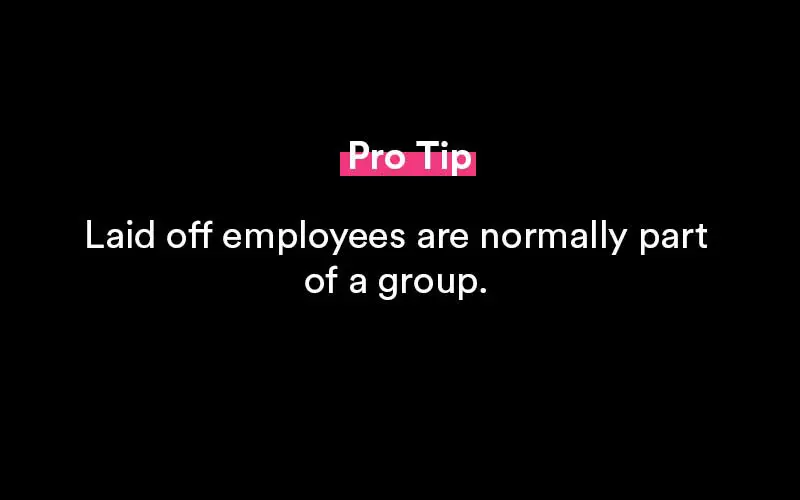
What does being "laid of" mean?
Laid off refers to getting "let go" for a number of reasons related to the company. Most commonly, changes in the company are the core motivator for employees being laid off.
This could mean a corporate takeover, mergers, acquisitions, or downsizing (cost reduction).
Layoffs happen. They're common. A company could be experiencing economic condition changes and have to execute company layoffs in order to decrease its overall expenses.
When a business does this, it's in order to reduce the overall costs of the business in order to stay alive in the market. Most commonly, you'll know you're getting laid off when more than one person is part of this process.
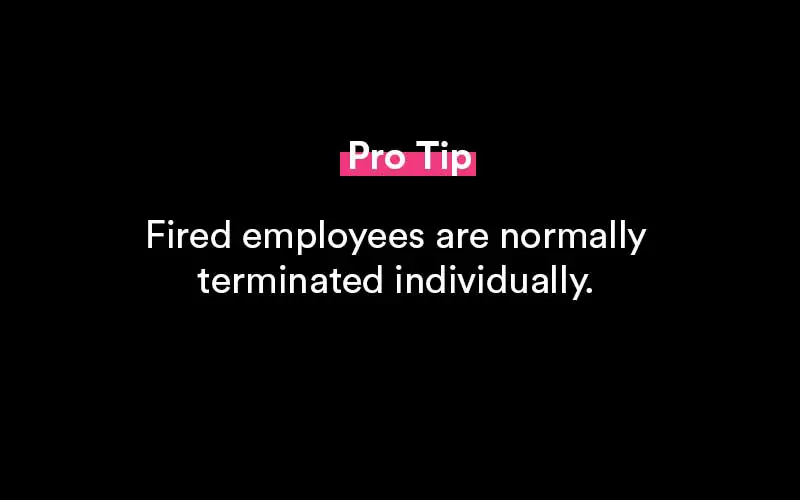
Reasons for getting laid off
Here are example reasons for why someone could get laid off:
- Cost reduction in the company.
- Staff redundancies.
- Corporate restructuring.
- Mergers and acquisitions.
- General downsizing.
- Economic downturn.
Since employee salaries are often the largest figure on an employer's annual budget, they're the first thing to get cut when economic conditions change.
What does getting "fired" mean?
When you're "fired" or terminated, it's usually related to poor performance. Performance, in many circumstances, could mean a wide number of things.
It could be related to poor collaboration with your team, unmet expectations of the role, or simply being a "poor fit" for the position.
Getting fired means the company ended your employment for reasons that are specific to you.
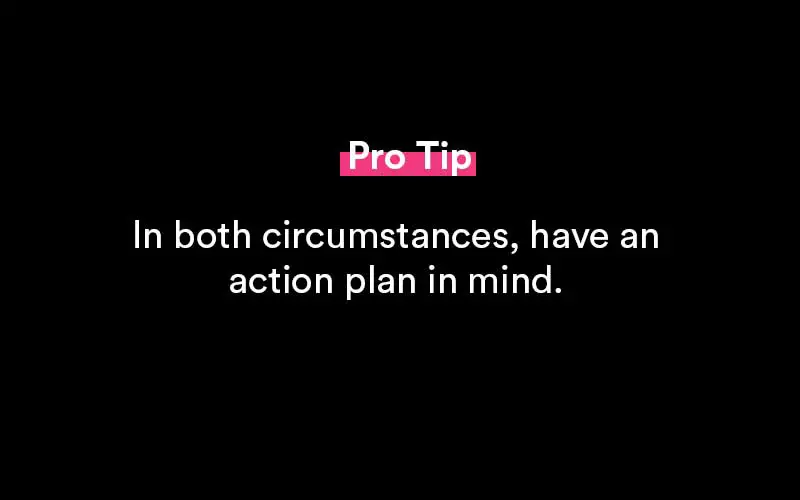
Reasons for getting fired
Here are example reasons for why someone could get fired:
- General misconduct in the business.
- Poor performance or unsatisfactory performance.
- Unmet expectations.
- Theft.
Examples of getting fired
An employee doesn't show up to work for more than five days in a row. They didn't call or speak with their manager regarding time off or paid sick leave. The manager terminates the employee for poor performance.
One employee decides to verbally harass the other employee. The first employee meets with the HR department to deal with the conflict. The other employee decides to continue their harassment. That employee is terminated for misconduct.
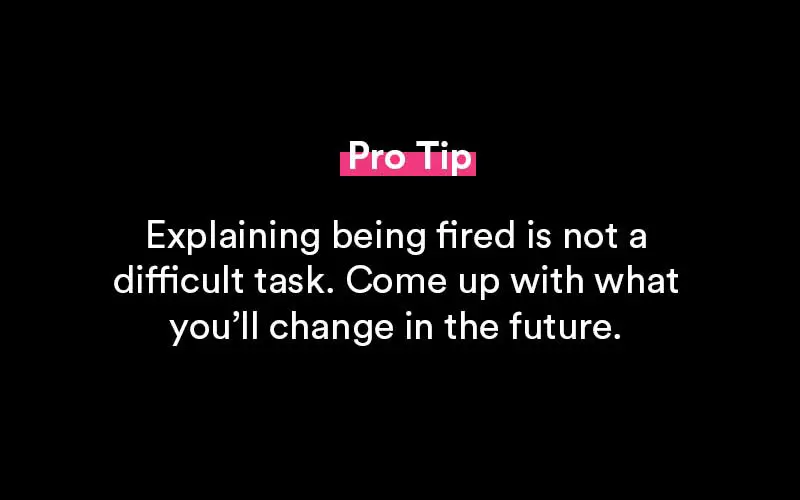
Difference between laid off vs fired
Laid off employees are offered severance packages. While terminated employees have to seek unemployment compensation while they hunt for a new role elsewhere.
This is a key difference.
Future employers will care less about laid-off employees, while they are concerned about employees who were terminated for poor performance.
In many cases, an employer checking references will find out that the employee was terminated by their former employer. It's a common scenario for a future employer to check references and learn the reason why the job seeker is looking for a new job.
You were terminated if you:
- Have to seek unemployment compensation. In some cases, you might not quality to receive unemployment compensation if you quit before your termination.
- Are getting your employment agreement terminated individually, and not part of a group.
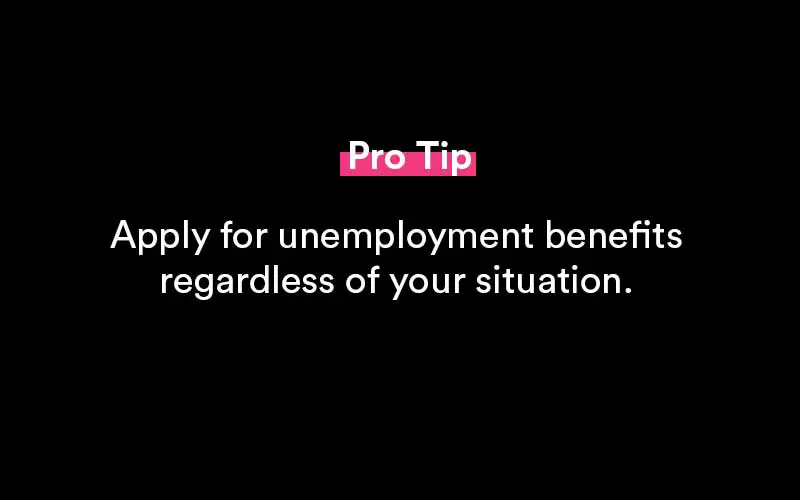
You were laid off if you:
- Are eligible for severance pay and other employee benefits.
- Can collect unemployment benefits.
- Considered part of a group of employees who are getting let go.
- Were part of a group of specific job titles that got let go.
Employment contracts are specific to senior-level executives. Employment agreements are the documents that are signed by the common employee.
In both agreements, severance information is normally covered toward the end of the agreement. Outplacement services could be offered to laid-off employees. This will be covered at the end of the agreement, as well.
At-will employee
An at-will employee can mean different things based on the employment law of the state.
Generally speaking, an at-will employee refers to the agreement that's being signed between the employee and employer. It refers to the fact that the employer has the ability to terminate the employee, at any time, for any reason, without cause or warning.
What does this mean?
It means that your employer doesn't have to inform of you of the reason why they chose to terminate you.
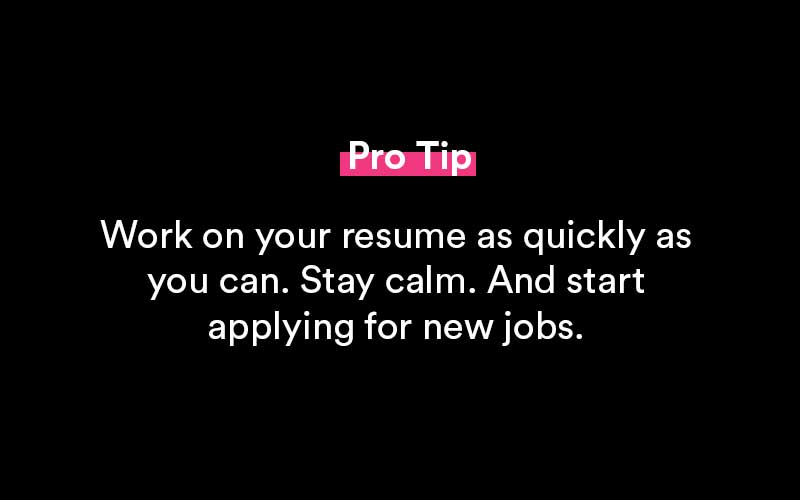
What to do in both circumstances
Here's what to do when fired or let go.
Establish what happened
Determine what happened. Were you fired or let go? From here, you can determine the appropriate next steps. Like applying for unemployment in order to receive an income when searching for a new job.
Or if fired, you can work on your job search. And determine the appropriate next steps for being able to resolve your performance issues. And explain to your future employer how you'll resolve those issues if you were to get hired with them.
The nature of the termination could affect your future eligibility to secure jobs or secure unemployment.
Check on your severance package
If you were let go, it's time to consider looking at your severance package. Understand what's part of your package. What kind of payment will you receive? Traditionally, two-week pay is common.
In some circumstances, up to three months of pay is available to employees who were let go as part of corporate downsizing.
Many HR representatives can assist you in understanding your benefits package. You may want to get a head start on applying for Consolidated Omnibus Budget Reconciliation Act (COBRA). This is a health insurance benefit that applies to those who were fired or laid off. It allows a person to receive health insurance for a determined period while seeking new employment.
For many companies and states, you may be legally entitled to pay for unused time off.
Return company property
Make sure to return any company laptops, paperwork, or other documents that could be considered a liability if they are held.
Communicate with the HR department to ensure that all personal and professional property is returned to their proper places before leaving the office.
Collect your final paycheck
Before leaving the workplace, you should always seek to inquire about your final paycheck. This applies to those who have gotten terminated. Or those who are let go. In both circumstances, a final paycheck must be given.
In some states, employment law requires employers to pay their employees immediately after they terminate their employment agreements.
File for unemployment benefits
In most cases, laid-off employees can file for unemployment benefits. In order to do this, they should register either online, over the phone, or in some states by mail. Claims filed online is the fastest way to ensure that the benefits are received.
Make sure to get a head start on this filing as it could take time to process this information by the state.
Get your references
Gather any professional references, recommendation letters, or projects that could assist in the job search. In either event, either getting terminated or getting laid off, there could be some employees or supervisors who are willing to write a glowing letter of recommendation.
Seek to gather these assets as quickly as possible.
Start your job search
In any event, begin the job search. Start scouring through job postings that could fit your prior work history and competencies. Fired employees still have a great career path ahead. Though, it could take more convincing than normal to find new employment.
Most employers will be understanding of layoffs since layoffs occur often. While a new employer could be more hesitant about an employee who was terminated.
In any case, seek out a new job quickly. Don't waste time.
Furloughed, what's that?
A furlough is an unpaid leave of absence. Furloughed employees still technically retain their positions, they do not earn a salary. For the employer, this is a temporary arrangement where the workers will get to return to their job at a later date.
Difference between furloughed and laid off
A key difference between getting furloughed or laid off is that getting laid off is a permanent agreement between the employer and employee. While getting a furlough means that eventually, in the coming months, the employer will offer the employee to return to their original position.
Moving forward in your job search
Here are ways to move forward in your job search.
Getting laid off
Getting laid off is leaving on positive terms with the business.
In many circumstances, laid-off employees make a good match for a future employer. Since it doesn't relate to performance. Or any behavior that is considered inappropriate. It is simply bad luck of the business that needed to be addressed through employee layoffs (the need to cut costs).
Your reason for leaving the job, during interviews, or in your cover letter can be due to company layoffs. Generally speaking, a layoff is easy to bounce back from.
If terminated or fired
This could have significant impact on finding a new position. It is considered a negative connotation to an employees track record.
The best way to bounce back from getting fired is to understand the reasoning. And then come up with a game plan on how you'll address that with your next employer.
Meaning, you can explain the following in the job interview:
I was terminated in my last position. It was due to losing confidence in the business. And expressing that loss of confidence with my team. I understand now that this is not the best way to motivate the team. I'm working on this already. And have gotten some career coaching to help me address my stress in a better, more professional way.
In both cases, stay calm
It's best to stay calm. A few things you can do in order to stay calm:
- Start your new search for a position as quickly as you can.
- Apply for whichever benefits you are eligible for.
- Collect recommendation letters and reference letters as quickly as possible.
- Create a plan for your career path. And stick to it.
Tips on what to do when you were terminated
Here are some tips to follow if your employer terminates your employment:
- Ask your employer why you were dismissed. While there is a significant chance they will not share this information. In the event they do, it will help to clarify your situation regarding unemployment benefits.
- Before signing any agreement that the employer refers to you, be sure to seek an employment attorney who can help you to understand the agreement.
- Check with your local and state unemployment office to determine whether you qualify for unemployment benefits on behalf of the state.
- Transfer the value of your 401k plan and pension to another plan. Your HR representative should assist you with this request and this process.
- Avoid speaking negatively about your employer when applying for a new job or when interviewing for another position.
- Ask your supervisor for a letter of recommendation if you were in good terms with them. It will make it easier to show potential employers why you were dismissed. And that you had good performance with the company for some time.
- Ensure you collect your last paycheck. Or inquire about when your last paycheck will be provided to you.
Popular Resources

Featured
35+ Phone Interview Questions & Best Sample Answers
Phone interviews have become a core part of the process when attempting to find a secured placement for an open position. Companies receive massive responses from potential candidates for any..

Featured
12+ Best Questions To Ask A Recruiter
Concerning a job search, you might receive numerous offers from your recruiters. Before you choose one, you need to assess all the conditions, for which it is vital that you know everything associated with the offered position..

Featured
Answering "What Makes You Unique" In A Job Interview
Answering this question during a job interview requires more than knowing why you are unique as an individual. Yes, the true scientific answer is made up of two main components: your..

Featured
250+ Ice Breaker Questions for Life
An ice breaker question is a question that’s asked from one person to another person in order to act as a conversation starter. It brings a connection...

Featured
10 Best Answers to "What Motivates You?"
Open-ended questions like “What motivates you?” can elicit a deer-in-the-headlights reaction from job candidates if they are unprepared. It’s a broad question and can leave the interviewer..

Featured
Answering "How Did You Hear About This Position" In An Interview
A lot of interviewers ask this question - how did you hear about this position? This way they can judge you if you are a passive or an active job seeker..

Featured
8 Best Thank You Emails After an Interview (Samples, Free Templates)
Writing a thank you note after an interview says a lot about you as a potential employee. Most notably, it says that you care about the opportunities presented..

Featured
Writing a Resignation Letter (How To Write It, Samples)
Writing the perfect letter of resignation is more of an art than it is a science. And we’re going to cover how to master that art form in this full guide..

Featured
How to End a Letter (Example Salutations, Sign Off's)
Knowing how to end a business note or email is an important skill to develop. It helps portray a sense of confidence, respect and tone to your message..
